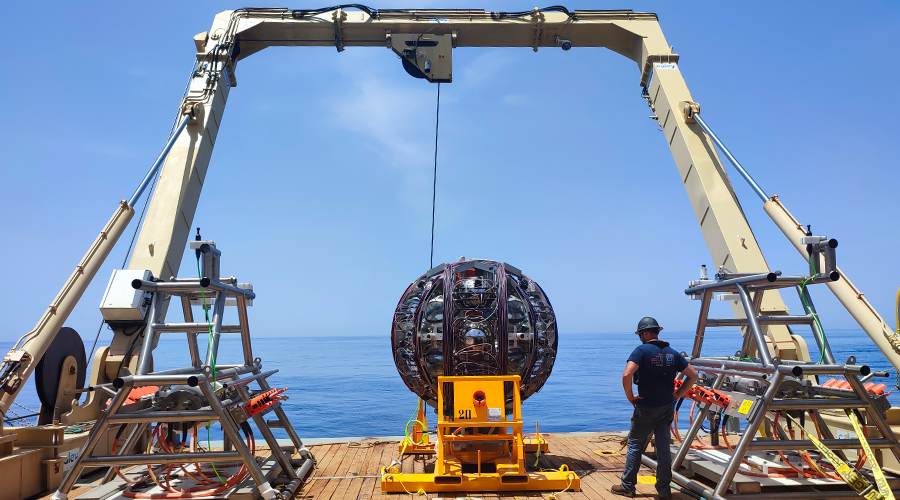
The complex marine operation aimed at the installation of new structures for the KM3Net submarine neutrino detector at the deep sea site off Capo Passero, in the southeastern tip of Sicily, has been successfully completed.
The announcement came from the National Institute for Nuclear Physics (INFN), one of the major research organizations involved in the KM3Net international collaboration – which includes over 250 people from almost 60 institutes around the world – with research groups at the Southern National Laboratories and the INFN divisions in Bari, Bologna, Catania, Genoa, Naples and the associated group in Salerno, and Rome, in collaboration with their respective Universities.
The mission made it possible to significantly expand the ARCA submarine telescope: the instrument aimed at searching for cosmic neutrinos up to extreme energies which, together with the ORCA submarine telescope – dedicated to the study of neutrino oscillation mechanisms – constitutes the heart of the KM3Net detector, a strategic research infrastructure included in the National Research Infrastructure Plan (PNIR) 2021-2027 of the Ministry of University and Research (MUR).
ARCA (Astroparticle Research with Cosmics in the Abyss) consists of a network of strings, known as detection units, up to 700 metres high and anchored to the seabed, each equipped with more than 500 ultra-sensitive detectors (photomultipliers) installed in 18 optical modules. The installation site is at a depth of 3,500 metres some 80 kilometres from the coast.
Thanks to the complex operation, which took place over two weeks in June, the size of the ARCA submarine apparatus has more than doubled, now comprising 19 detection units, equipped with more than 10,000 photomultipliers.
Due to the volume of instrumentation to be installed, the operation took place in two phases. The first phase involved the installation of two junction boxes, the submarine structures used to connect the detection units and which allow communications with the control station on shore, and of 4 new detection units. The second phase involved the installation of 7 new detection units.
The campaign was carried out on board the ship Handin Tideof the FUGRO company which departed from the port of Malta. With the implementation of this campaign, the IDMAR project for the enhancement of maritime research infrastructures in Sicily, co-funded by Regione Sicilia as part of Po-Fesr 2014-2020, is nearing completion.
“The success of this campaign,” emphasized Giacomo Cuttone, a researcher at the INFN Southern National Laboratories and national coordinator for KM3NeT, “is a fundamental achievement for IDMAR and demonstrates that we have full control over the complex marine operations required for the implementation of KM3NeT”.
“Complex operations such as this one are a demonstration of the level of accuracy achieved in the construction of deep sea structures and the reliability of installation operations,” commented Paolo Piattelli, a researcher at the INFN Southern National Laboratories and Operations Manager of KM3NeT/ARCA. “The installation of 7 detection units in less than 48 hours during the second phase of the campaign represents a record-breaking speed that allows us to plan the continuation of the construction of the apparatus in a short time,” concluded the researcher.

